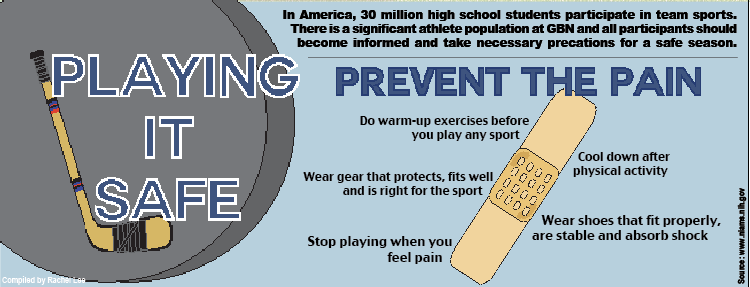Senior Kiera Abramson said as she finished a girls varsity cross country meet at the beginning of the 2013 season, she felt a sharp pain suddenly shoot through her right ankle.
“I noticed it bothering me, but I kept on running, thinking it wasn’t anything,” Abramson said.
However, she was wrong.
“Every time I would walk, run or finish practice, it would hurt,” Abramson said.
Abramson said when the pain did not go away, she told Bob Leblanc, girls cross country Head Coach, about the problem. Together they decided she should spend practice on the elliptical in order to minimize the pressure on her ankle.
According to David Lessman, primary care sports medicine doctor at Advocate Children’s Hospital, a stress fracture is a bone overuse injury. It occurs when an athlete’s body is overworked, and the body does not have enough time to recuperate between workouts.
LeBlanc has observed that the most common way stress fractures form is when runners neglect to notify him about the pain until their condition becomes severe.
“Something hurts [the runner], and then all of a sudden the kid goes, ‘About two weeks ago…’” said LeBlanc. “It is hard to help them at that point.”
Because of this, LeBlanc said prevention can be challenging.
“You can never fully prevent it, but [the coaching staff does its] best to help minimize the risk,” LeBlanc said.
In order to accomplish this, LeBlanc makes sure all runners have appropriate shoes that fit their type of feet in order to maintain the most beneficial amount of support.
LeBlanc also advises runners to run in the off-season in order to prevent injury and allow their bodies to gradually acclimate to intense running. Lessman agrees with him.
“A lot of times, [stress fractures] will happen when there is an increase in how much somebody is training,” said Lessman. “[When] you increase how much you are doing or how hard you are doing it, you are not giving your body the time to remodel.”
When runners start to experience pain, LeBlanc often sends them to the school’s trainers so they can be “evaluated and see if they are at a higher risk [for a stress fracture].” However, after being examined by the school’s trainers, students should receive further treatment from an outside doctor.
After a month of pain last fall, Abramson said she finally went to a doctor who revealed that she had a severe stress fracture in her right ankle. Although her stress fracture went away after the season, it came back again this fall.
Lessman does not allow any of his patients to continue their sport until they are pain-free for 6 weeks.
“If you continue to run on a stress fracture, or if you continue to pound on that bone, it will turn into a complete break,” Lessman said.
Although Abramson does not participate as much as she used to, she stays on the elliptical during practices and occasionally runs in meets. However, she sees herself getting slower. To prevent what happened to her, Abramson advises all athletes to monitor his or her pain.
“If you start feeling pain in your legs, take a break,” Abramson said.


